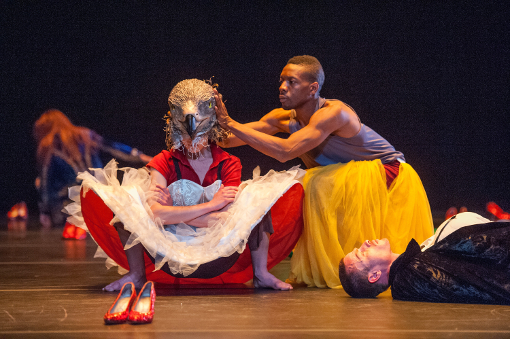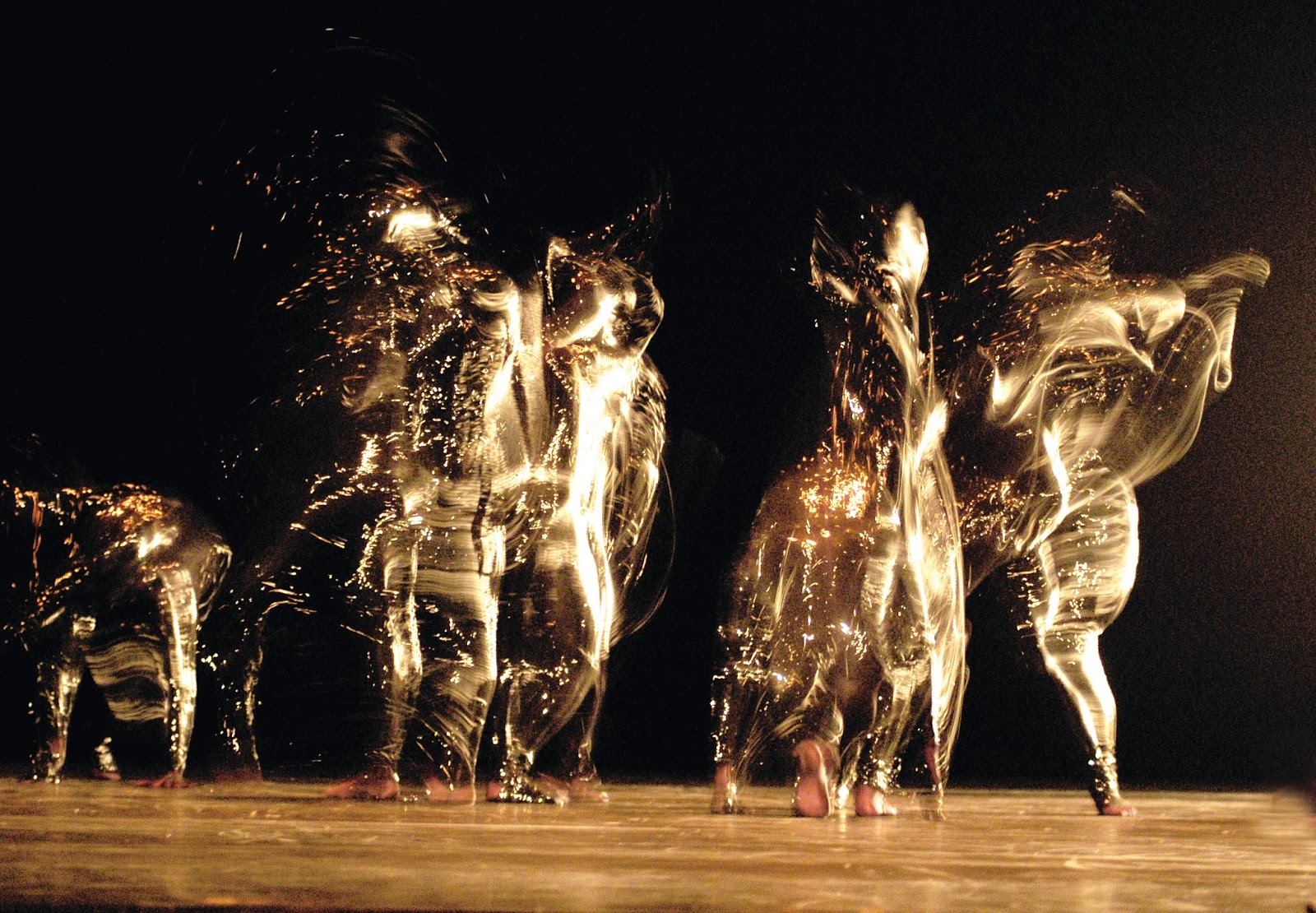By Rachel Straus
When the ushers of BAM’s Howard Gilman Opera House are handing out earplugs to audience members before the start of a show, it is an obvious warning: What’s to come will not be soothing. Such was the case with ni fleurs, ni ford-mustang (neither flowers, nor Ford Mustang), choreographed by fashion designer and conceptual artist Christian Rizzo, and performed by seven members of the Lyon Opera Ballet (May 7-9). The hour-long work began with Gerome Nox’s industrial sound scape, which simulated being inside of a very large, very old washing machine on the most violent of spin cycles.
Ear plugs are wonderful things.
With this jarring introduction, experienced May 8, the curtain rose. Not a dancer was in sight. Sparkling red high-heel shoes littered the stage. Was Dorothy of the Wizard of Oz trapped in said washing machine? And was she all grown up, having discarded her flats for heels? Alternatively, was the sparkly skeleton, hanging high above the stage, Dorothy’s remains!?
These questions were not answered. Instead a female dancer entered from the wings in casual clothing and lay prone on the floor next to a stuffed animal carcass. More odd juxtapositions ensued: the cast’s deadpan expressions contrasted with their increasingly theatrical costume changes; these ballet dancers only walked, lay down, and got up. A more apt title for Rizzo’s 2004 work might be ni fleur, ni ford-mustang, ni danse. Or, A Study in Diminishing Expectations for Dance Lovers.
Instead of movement invention, the cast performed a steady layering of vintage undergarments and historical dress onto their bodies. The clothes came into high relief because of Rizzo’s enormous glowing wall, set at a 45 degree angle to the proscenium stage (Rizzo designed the costumes too). When exiting and reentering, the performers invariably appeared with another layer of clothing. If one was stretching one’s analysis of ni fleur, one could say the work focused on the history of European dress. Early on the cast wore wire skirts that changed the shape of their bodies. Later, the dancers donned jackets, wigs, and jackets, some Napoleonic, some Edwardian.
At the thirty minute mark, audience members started making their way to the exits. Was was part of Rizzo’s plan? Those of us seated got to observe their costumes too.
The most compelling costume was worn by dancer Franck Laizet. A big man, his wire undergarment and padding gave him huge ponderous breasts, gargantuan hips and a belly. Then a slight female dancer appeared wearing a beard. When Randy Castillo entered wearing a yellow, tulle floor-length skirt (reminiscent of Romantic ballet garb), and undulated his arms as though he was channeling the west African dancer Asadata Dafora in his famous solo Ostrich Dance, it was positively exciting. Castillo’s flying arm movements appeared to be triggered by his donning of a large bird headdress.
Castillo danced shirtless. Were we to connect dancing with nudity or being an animal? This notion was supported by what happened next: The performers began appearing as creatures, wearing sci-fi looking black latex body suits with bulbous protuberances. When they entered again with black helmets, this was the cue for them to begin lassoing their arms wildly toward the heavens. Because lighting designer Caty Olive cast them in black light, their iridescent costumes sent off sparks. Their limbs resembled molten lava. Just as ni fleurs began to fascinate, the curtain came down. Dance over.
There is a stereotype that the French are fickle. Ni fleurs, ni ford-mustang, shown as part of Danse: A French-American Festival of Performance and Ideas, did not temper this received idea.

